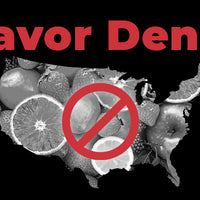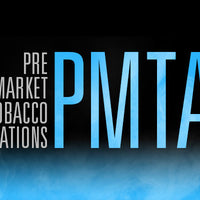Big tobacco companies have long been fearful of e-cigarettes cutting into their market as more smokers switch to vaping. Nonetheless, the FDA comments regarding the recent crack down on flavored e-liquids has sent tobacco stock prices soaring. Who is really benefiting from the latest attack on vaping?
The FDA vs. Flavored E-Cigs

In April 2018, the FDA launched the Youth Tobacco Prevention Plan to address public concern about teen smoking and vaping. Shortly after, the administration began issuing warning letters and monetary penalties to companies that make or sell e-liquids resembling “kid-friendly” items like candy, juice boxes and cookies. FDA Commissioner Scott Gottlieb called it the “largest ever coordinated initiative against violative sales in the history of the FDA.” Now, the FDA is giving e-cig makers an ultimatum: Submit a plan to prevent teens from using your products, or have them taken off of store shelves.
A few years back, the FDA proposed requiring all vapor products to undergo an expensive review process, but the agency is now focusing on flavored e-juices. The future is uncertain, but businesses could be required to revise their packaging and marketing strategies. Worse case scenario, all flavored e-liquids could become subject to FDA approval. Manufacturers have also been warned that they could be penalized if their retail partners are caught selling their products to underage customers.
Tobacco Stocks Climb After FDA Comments

Big tobacco investors welcomed the news as stocks in cigarettes suddenly surged. For example, Altria Group and British American Tobacco had their best days in ten years. Likewise, Philip Morris International and Imperial Tobacco both saw stock prices rise by 3 percent. Tobacco stocks have been in steep decline since e-cigs became widely available, which is why tobacco companies have been raising cigarette prices every year.
Ironically, tobacco companies have become some of the biggest manufacturers of e-cigs. Brands like Vuse, MarkTen and Blu E-cigs are all made by the same people who make traditional cigarettes. These companies can afford the massive fees that come with seeking FDA approval, and even if their products are pulled from the market, they can make up the losses in tobacco sales. Most companies that exclusively make vapor products have no such financial cushion, so stronger regulations and additional FDA comments could snuff out much of the e-cig market.
Unfortunately, thousands of retailers are also getting caught up in the chaos as they must choose between getting rid of their inventory or facing fines. Either way, American businesses will lose money. Tobacco companies will remain profitable while the people who sell their products will suffer.
What’s the Fuss About Flavored E-Cigs?

While e-cig opponents have accused e-cig makers of purposely marketing to children, tobacco harm reduction advocates claim that flavored e-cigs help adult smokers who want to wean themselves off of tobacco. A new study published in the British Medical Journal suggests that vaping helps smokers “transfer cigarette addiction to nicotine addiction,” which is far preferable since vaping is 95 percent safer than smoking.
Although the American medical community has warmed up to e-cigs significantly in recent years, the FDA has cited rising rates of teen vaping as cause for concern. For now, the statistics on teen vaping are inconclusive. Hopefully, the FDA won’t throw out the metaphorical baby with the bath water by banning e-cig flavors altogether.
E-Cigs for Adults, Not for Kids

No one wants young people to take up vaping, which is why White Cloud has a state-of-the-art age verification process for all of our online sales. That said, the myth that vaping serves as a gateway to smoking has been thoroughly debunked. If anything, e-cigs have provided an escape route for thousands of smokers who have beaten their tobacco habits. The FDA is right to be concerned about teens vaping, but banning flavors only benefits tobacco companies, who have already made enough money at the expense of public health.








